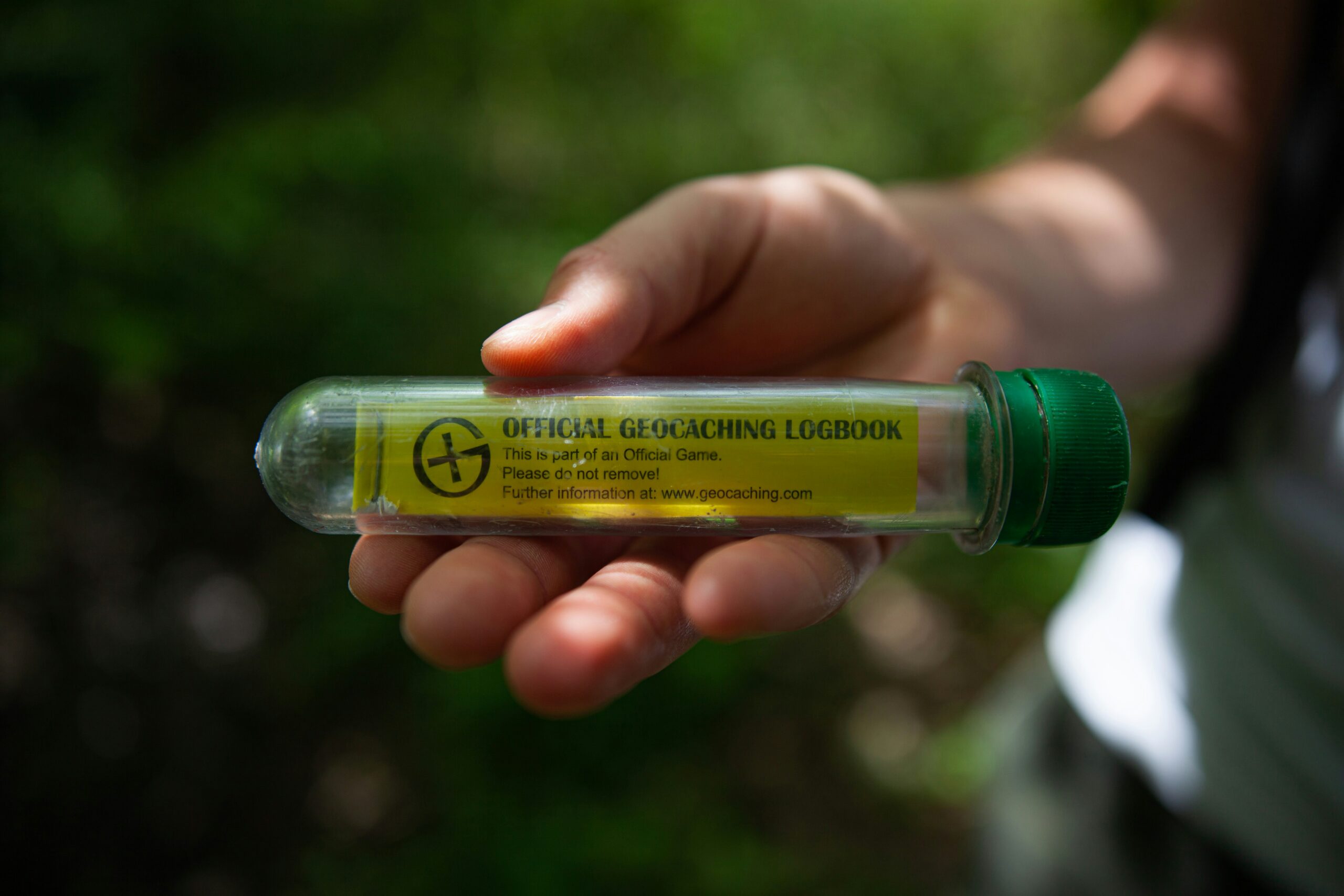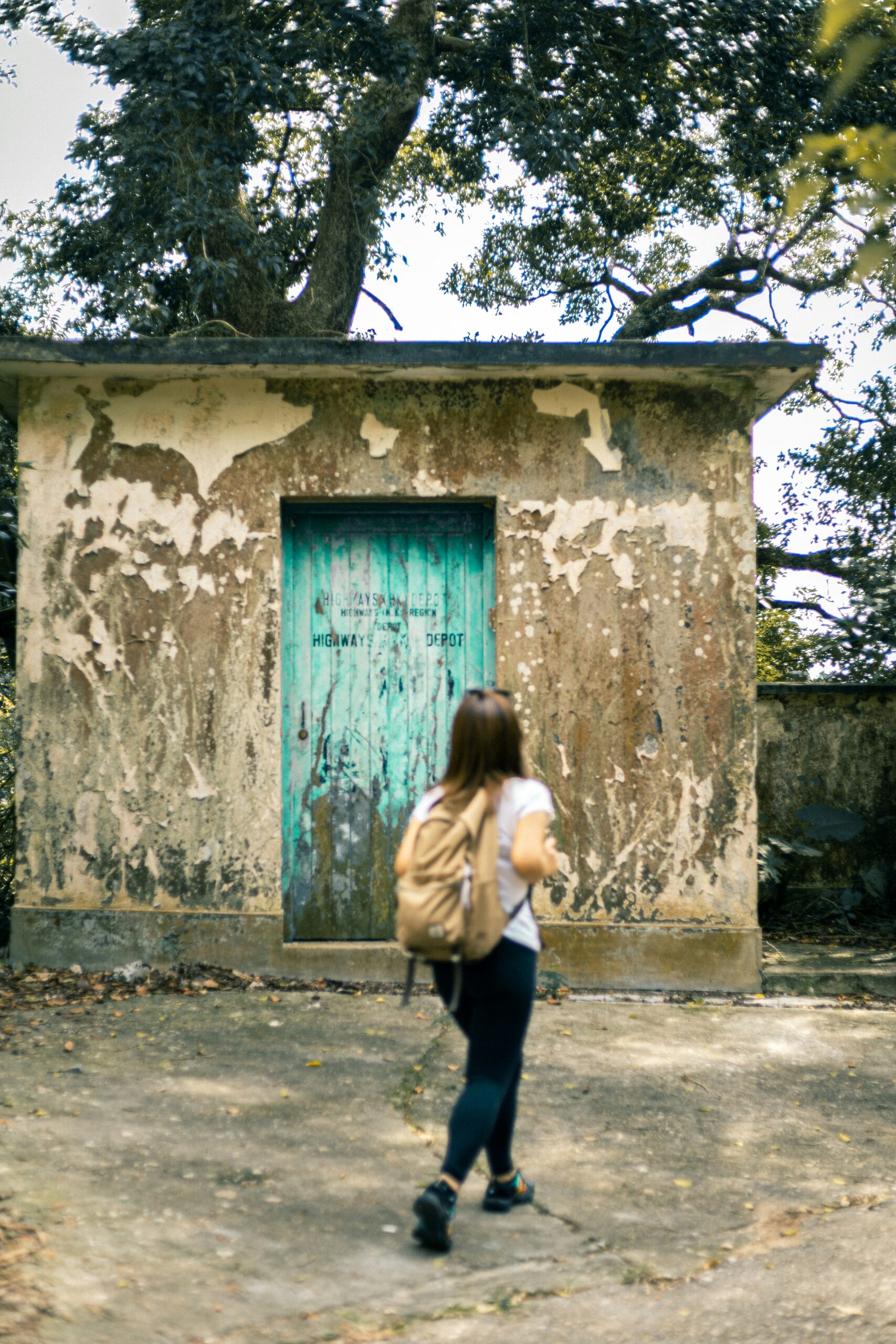Discover Hidden Treasures through Geocaching” invites you to embark on an adventure like no other. Picture this: you, with a sense of anticipation, guided by coordinates and clues, searching for hidden containers or ‘geocaches' tucked away in unexpected places around your local area. Geocaching combines the thrill of a treasure hunt with the joy of exploring your surroundings, offering a perfect pastime for curious minds and adventurous spirits. Get ready to uncover the hidden gems that lie just beneath the surface of your everyday world—because adventure is calling, and it's closer than you think! Have you ever wondered what hidden gems might be lurking just around the corner from your neighborhood, waiting to be discovered? Imagine embarking on a modern-day treasure hunt, using your curiosity, a sense of adventure, and a GPS device to guide you. If this sounds like your kind of adventure, then welcome to the world of geocaching!

What is Geocaching?
Geocaching is an outdoor recreational activity where participants use a GPS device or a smartphone to hide and seek containers, called “geocaches” or “caches.” These caches can be hidden anywhere in the world, from bustling urban areas to serene natural landscapes. It combines the thrill of scavenger hunting with the opportunity to explore new places, all while embracing technology and navigation skills.
How Does Geocaching Work?
The basic premise of geocaching is simple yet endlessly exciting. Someone hides a geocache and shares its coordinates online. Other geocachers then use these coordinates to search for the cache. Once found, they sign the logbook inside and might trade small trinkets left by previous finders.
Here’s a step-by-step outline to get you started:
- Sign Up: Create an account on a geocaching website or app.
- Search: Use the search function to find geocaches near your location.
- Navigate: Use the provided GPS coordinates to navigate to the cache.
- Find: Once at the location, search carefully and find the hidden cache.
- Log: Sign the logbook, and optionally, trade items.
- Share: Log your find online and share your experience with the community.
Why Geocaching?
Fun and Adventure
Geocaching is like a real-life treasure hunt. The thrill of discovery and the joy of finding something hidden away can be incredibly rewarding. It caters to people of all ages and can turn a mundane walk in the park into an exhilarating quest.
Family-Friendly Activity
Geocaching is a fantastic activity for families. It gets everyone outside, moving, and working together to solve clues and find the cache. Kids, in particular, love the treasure hunt aspect, making it a great way to spend quality time together.
Educational Aspects
Geocaching involves problem-solving, navigation skills, and sometimes even a bit of history or geology, depending on the location of the cache. It’s an excellent way to learn about the world around you while having fun.
Community and Socialization
Geocaching has a strong online community where people share stories, tips, and experiences. Participating in this community can lead to new friendships and connections with people who share similar interests.
Types of Geocaches
Not all geocaches are created equal. They come in various types, each offering a unique challenge or experience. Here are some common types you might encounter:
| Type | Description |
|---|---|
| Traditional | The original type of cache featuring a container and logbook at specific coordinates. |
| Multi-Cache | Involves two or more locations. The final cache is found by collecting clues from the initial points. |
| Mystery/Puzzle | Requires solving a puzzle or riddle to determine the final coordinates. |
| Event | Social gatherings organized by geocachers, often centered around a specific activity or theme. |
Getting Started with Geocaching
Step 1: Sign Up for a Geocaching Account
Before you head out on your first hunt, you'll need to sign up for a free account on a geocaching website like Geocaching.com. This will give you access to all the caches around the world and allow you to log your finds and interact with the community.
Step 2: Gather Your Gear
You don’t need much to start geocaching, but a few essentials can make your adventure more enjoyable:
- GPS Device or Smartphone: Most modern smartphones come equipped with GPS capabilities, but dedicated GPS devices can offer greater accuracy.
- Pen or Pencil: Many caches contain logbooks that you’ll need to sign.
- Trade Items: Small trinkets or toys can be left in the cache for others to find. It’s good etiquette to swap items rather than just take them.
- Camera: Optional, but useful if you want to document your finds.
Step 3: Choose a Cache
Using your geocaching app or website, search for caches near your location. Pay attention to the difficulty and terrain ratings, especially if you’re just starting out. Here’s what to look for:
- Difficulty: Rated from 1 to 5, with 1 being the easiest.
- Terrain: Also rated from 1 to 5, with 1 being accessible to all and 5 requiring specialized equipment or significant effort.
- Size: Ranges from micro (tiny containers) to large (buckets or boxes).
Step 4: Head Out and Search
Once you’ve selected a cache, follow the coordinates on your GPS device or smartphone. When you’re close to the location, it’s time to put your detective hat on. Geocaches can be hidden in a variety of ways, so think creatively.
Step 5: Find the Cache and Log Your Find
When you’ve located the cache, sign the logbook and, if you’ve brought trade items, swap them out. Be sure to log your find online to let others know the cache is still active and share your adventure.

Tips and Tricks for Successful Geocaching
Be Prepared
Bring a small backpack with water, snacks, and a first aid kit. Geocaching can sometimes take you off the beaten path, so it’s best to be prepared for anything.
Respect the Environment
Always follow the Leave No Trace principles. Respect nature and private property. If a cache location seems to be causing harm to the environment or is in an inappropriate location, report it to the cache owner.
Stay Safe
Use common sense while geocaching. Stay aware of your surroundings, and if a location feels unsafe, it’s okay to walk away and try another cache.
Read the Cache Description
Cache descriptions often contain valuable hints and information about the location and what to expect. Reading the description thoroughly can save you time and frustration.
Patience and Persistence
Not every geocache will be easy to find. Some might take several visits or even a bit of help from the community. Don’t get discouraged if you don’t find a cache right away.
Advanced Geocaching
Mystery and Puzzle Caches
Once you’ve gotten the hang of traditional geocaching, you might want to try your hand at mystery or puzzle caches. These often require solving clues, riddles, or puzzles to obtain the final coordinates. It’s like adding an extra layer of challenge to your adventure.
Multi-Caches
Multi-caches involve multiple stages and require you to visit several locations before finding the final cache. This can turn a simple hunt into an extended adventure, perfect for those who enjoy a more challenging pursuit.
Trackables
Trackables are special items that move from cache to cache. They have unique tracking codes that you can log to see where they’ve been and where they’re headed next. If you find a trackable, you can help it along its journey and see its progress online.
Creating Your Own Geocache
If you’re ready to take your geocaching to the next level, consider hiding your own cache. Here are some steps to get you started:
- Choose a Location: Pick a spot that is both interesting and safe.
- Get Permission: Make sure you have permission from the landowner or manager.
- Prepare the Cache: Select a waterproof container and include a logbook, pen, and trade items.
- Hide the Cache: Place the cache in your chosen location. Make sure it’s well-concealed but accessible.
- Submit the Cache: Register your cache online and provide accurate coordinates and a detailed description.
Special Geocaching Events
Geocaching isn’t just a solitary activity. There are numerous events where geocachers can meet, share stories, and participate in group activities. Some of the most popular events include:
| Event Type | Description |
|---|---|
| CITO (Cache In Trash Out) | Organized events focused on environmental cleanup while geocaching. |
| Mega-Events | Large gatherings usually with 500+ geocachers, often featuring various activities and games. |
| Community Events | Smaller, local events where geocachers can meet and share experiences. |
Geocaching Etiquette
Be Respectful
Always respect private property and follow all local laws and regulations. If a cache is located in a sensitive area, take extra care not to disturb the environment.
Trade Fair
When trading items, ensure you leave something of equal or greater value. This keeps the cache interesting for future finders.
Log Your Finds
Logging your finds online helps the cache owner know their cache is still active and provides valuable feedback. Share your experiences and any difficulties you encountered.
Maintain the Cache
If you find a cache in poor condition or with a full logbook, consider helping out by providing maintenance. Replace wet or damaged logbooks and report any major issues to the cache owner.
The Global Reach of Geocaching
Geocaching is a worldwide phenomenon. With caches hidden in every continent (yes, even Antarctica!), it provides a unique way to explore new cultures and landscapes. Whether you’re traveling across the state or around the globe, geocaching can add an extra layer of adventure to your journey.
Virtual Caches and EarthCaches
For those who love to travel, virtual caches and EarthCaches offer a unique twist on traditional geocaching.
- Virtual Caches: These involve finding a specific location and usually require you to answer questions or take a photo to prove you’ve been there.
- EarthCaches: These are educational caches that teach you about a geological feature of the Earth. You’ll need to study the location and answer questions to log your find.
Benefits of Geocaching
Physical Health
Geocaching gets you moving. Whether you’re hiking up a trail or walking through a park, it encourages physical activity in a fun and engaging way.
Mental Health
The combination of fresh air, problem-solving, and a sense of adventure can be great for your mental well-being. It’s an excellent way to clear your mind and reduce stress.
Social Connections
Geocaching brings people together. Whether you’re attending an event or simply meeting fellow geocachers out in the field, it’s a social activity that can lead to lasting friendships.
Environmental Stewardship
Many geocachers are passionate about nature and the environment. Participating in CITO events and practicing Leave No Trace principles helps protect and preserve the natural world.
Conclusion
Geocaching is more than just a hobby; it’s a global adventure that fosters community, curiosity, and a love for the great outdoors. Whether you’re searching for your first cache or hiding one for others to find, each experience adds to the thrill of the hunt.
So, grab your GPS device or smartphone, gather some friends or family, and set out on a geocaching adventure. Hidden treasures and unforgettable experiences await you!
